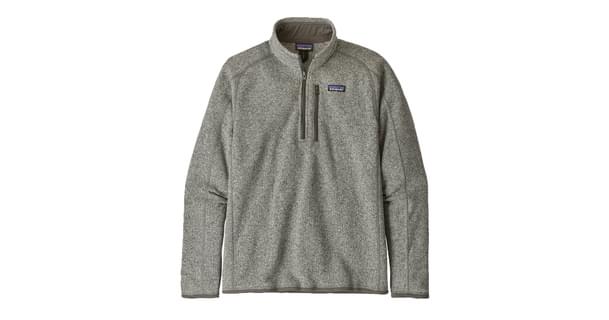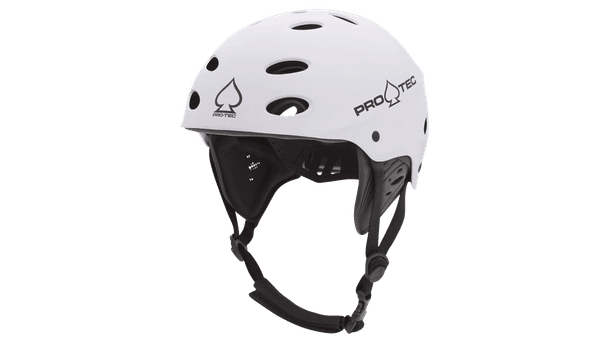- Home
- Gear & Reviews
- Multiple Light Duty Carrier (SUT-350-M2)
Multiple Light Duty Carrier (SUT-350-M2)
Multiple Light Duty Carrier (SUT-350-M2) Description
The Multiple Light Duty Carrier (SUT-350-M2) is a accessory brought to you by Trailex. Read Multiple Light Duty Carrier (SUT-350-M2) reviews or submit your own review to share with the paddling community. Check out a few other accessory recommendations below or explore all accessories to find the perfect one for you!
Trailex
Multiple Light Duty Carrier (SUT-350-M2) Reviews
Read reviews for the Multiple Light Duty Carrier (SUT-350-M2) by Trailex as submitted by your fellow paddlers. All of the reviews are created and written by paddlers like you, so be sure to submit your own review and be part of the community!
I have been using this…
I got this canoe/trailer as a…
I regret to downgrade the…
Stopping to inspect what happened revealed that the right-side support L-bracket (the side that my sea kayak was NOT on, fortunately) had actually broken off where it attached to the crossbar and allowed that rear crossbar to drop down. I was very luck in that the bolt end protruded enough to make the angled crossbar wedge against another part so that it jammed in the new position. The kayak was, of course, sloping downward because of that but due to my habit of running both straps under the deck rigging, it didn't slide backwards onto the road.
I don't know if the rear crossbar made a hard hit when it dropped or if it grated down slowly as it appears to have done, based on the scratch marks on the contact area. I just hope that if it was the former case, my kayak didn't get jolted hard enough to damage the glass.
For several months prior, I had noticed the rear crossbar wiggled/rocked. I had tightened the two (the ONLY two) bolts holding the rear crossbar to its L-bracket supports. Recently I had checked those same bolts and found them tight yet the movement persisted. What I did not realize at the time was that the L-bracket must have been cracked right at the bolt hole, with the crack hidden from view.
I could probably replace both L-brackets and maybe the crossbar but IMO both the front and rear support systems are not well-designed. They allow too much flex in such a long trailer, and aluminum plus flex is a bad combination.
In sum, this trailer might be fine for short trips or occasional use, but I cannot recommend it for more frequent or longer hauls. The amazing this is that I only used it frequently between spring 2011 and summer 2012--barely over a year. There was ONE 1500-mile trip from CO to WA. After that, it's hardly been used and is stored in a garage, rinsed off after literally every use, and generally well-maintained.
Now I'm not sure what to do, since I need a light trailer but no longer trust pieced-together aluminum trailers.
Just a quick blurb to add to…
In addition to lots of local drives, I drove the trailer with 2 fiberglass sea kayaks on it 1500 miles from CO to the WA coast. It did the job well and was easy to tow.
It's still too early to write about long-term durability, but this trailer appears to be up to snuff for Interstate driving. Quiet, smooth, no swaying, no damage.
The trailer is lightweight…
The SUT-350-M2 arrived via UPS in 5 boxes this March. I had a real nightmare with UPS's mis-handling of the long tubes, but apparently it was a problem with UPS, not Trailex. Anyway, the assembly was easy, a simple bolting together of parts that joined without any headaches. Only a couple of tools are required. One of them is a torque wrench--make sure you use one, because you are working with aluminum and should not overtorque the bolts.
Wiring was another story. It was not so much the act of wiring itself that was frustrating (though I think trailer wiring is a PITA). The source of my anxieties was the fact that a couple of steps in the instruction were missing. I figured it out before doing anything wrong, but if you don't read and understand the sequence BEFORE starting the wiring, you could be in for an unpleasant surprise. Luckily, Trailex's tech rep was both available and helpful.
Once everything was together and working, I was happy to find that the trailer rides very smoothly. You barely know there is a trailer behind the tow rig--something to keep in mind because this is a LONG trailer befitting its long cargo. The axle is near the end of the trailer. While this probably contributes to the smooth hauling (more cargo weight over the tongue tube), you need to train your brain about the extra length when turning. My husband curb-checked the trailer wheel. I didn't have any problem with this, but if you tend to drive on autopilot-brain (or pay more attention to talking or passengers than the driving), a trailer (any trailer) is probably something you'll need extra practice with.
I set the crossbar span to about 6'. If you have short boats, the shorter versions of this trailer would be more suitable. However, if you want longer span, the SUT-350-M2 will accommodate that. Crossbar height is good for transferring to and from shoulder carries.
Our kayaks sit on minicell shaped foam blocks: husband's kayak rides upright on the hull; mine rides on its side on half blocks, using the center riser bars for stability. We transport only the two kayaks; the trailer is rated to carry up to 4 on their sides.
The crossbars are padded with rubber strips on top. Probably fine for carrying canoes. Kayakers should use foam blocks or cradles for hauling.
Trailer wheels are the small 8" size. I have used that size of trailer wheels for 11 years, with no problem on either local roads or long Interstate drives. Just keep the tires inflated enough. The sticker on the trailer recommends 20 psi, but I use 38 to 40 psi as I always have, and that works very well. (The tires themselves are rated to at least 60 psi max.)
One thing I dislike about many boat trailers, including this one, is that the taillights are horribly vulnerably to damage. You may want to make some brackets to surround the taillights to protect them from damage.
Also, I placed reflective tape pieces all over the main tubes plus other places, because this trailer is so skeletal that it's hard to see without boats on it. I noticed a different small boat trailer at the ramp that was painted bright red, and it had white rims. That trailer stood out clearly among all the other low, low-visibility boat trailers. Kayak trailers would do well to copy that example.
In short, the SUT-350-M2 is light, accommodates long boats with good crossbar span for them, and can be fitted for a gear box over the box frame at the axle. I have yet to take it on a long road trip, so that aspect remains unknown. However, based on its behavior on the 40-mile highway run to my favorite local lake, it should do well on road trips.




